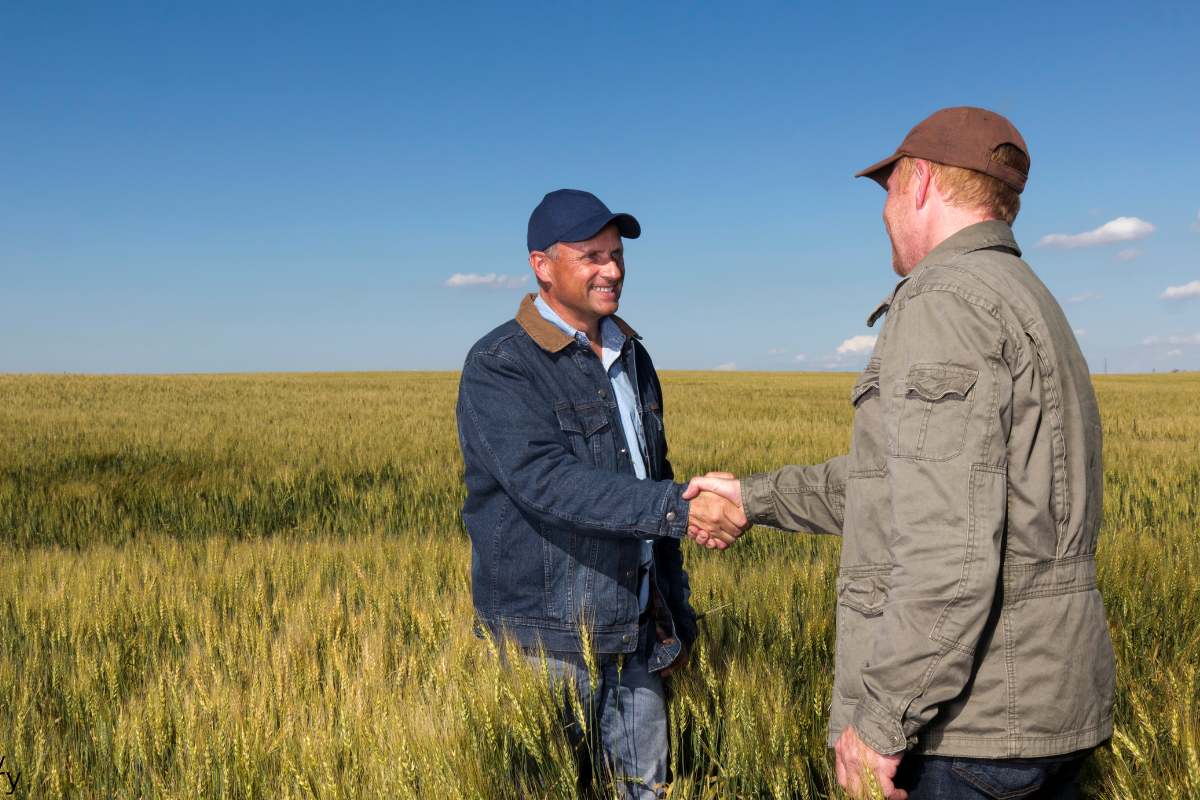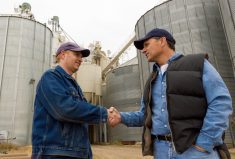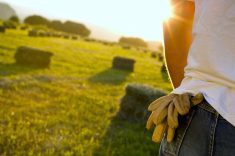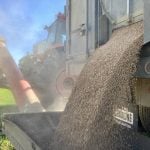Land is in an investment category almost all by itself, says Steve Duff, Ontario’s chief ag economist. “Outside of GICs, there aren’t a whole lot of assets in today’s market that don’t have some downside risk.”
It’s little wonder that other market watchers agree. Canada’s farmland prices increased by double-digit percentages every year from 2011 to 2015, peaking at 22.1 per cent in 2013, and they’ve kept bulldozing any doubters out of the way ever since.
With a fundamentally healthy farm sector, Manitoba Agriculture farm management specialist Darren Bond says there’s no end in sight.
Read Also

Are you ready for farm succession?
What motivates some farmers to make a succession plan while others don’t seem worried.
But that doesn’t mean all the tough questions are off the table, like this one. Where is the best upside potential?
Recent gains
Country Guide will keep coming back to that question this winter, but for now, let’s start at the beginning. The story is familiar, but it merits repeating anyway. Farm Credit Canada (FCC) has reported farmland values across Canada continued their upward trend, rising an average 3.8 per cent in the first half of 2021.
“Higher-than-normal prices for wheat, canola and corn have improved the profitability of many operations in the second half of 2020 and early 2021, putting them in a better position to invest in farmland as the opportunities arise,” FCC’s chief economist J.P. Gervais said in a statement.
Historically low interest rates also continued supporting demand, FCC said.
Appraiser Dave Weber with Alberta-based Serecon adds, too, that poorer returns from other investment opportunities have encouraged non-traditional agriculture buyers — like investment firms and non-farming individuals — to invest in farmland, thereby creating additional demand growth.
Ontario’s Duff points to investor buying too. “Land is a strong asset to have in your financial portfolio,” he says. “That’s continued to contribute to some of the strength in prices that we’re seeing.”
The limited supply of farmland coming to the market remains a big contributor to ongoing price strength as well.
“Often there are only a few parcels a year come up for sale in one’s farming area,” agrees Bond. “This has kept land values steadily appreciating.”
Land demand
Nevertheless, demand is a major driver, especially in Ontario. If you’re looking for a bargain, in other words, this probably isn’t the province for you. Ontario saw thelargest farmland value increases in Canada at 11.5 per cent for the first six months of 2021, and 15.4 per cent over 12 months, FCC reported.
“The competition for what does come up is insatiable,” Duff says. “In Ontario, I could sell farmland and get the cash from it quicker than I could cashing an RRSP.”
It all adds up to a market where farmers are racing past bids that made them shake their heads just last Christmas.
“The serial transaction value for farmland in Ontario is huge,” says Duff.
“It’s not uncommon to hear of $30,000 to $35,000 an acre — in land that isn’t being bought for future development, that isn’t being bought by foreign landowners, etc., but that’s being bought by Ontario farmers.”
Changing trajectory?
Increases were much less pronounced on the Canadian Prairies, with Alberta up a more modest 3.7 per cent over the first six months of 2021, Manitoba 3.5 per cent, and Saskatchewan only 1.8 per cent, FCC said.
Saskatchewan also only experienced a 3.5 per cent rise on a 12-month basis, representing the lowest increase in the last 15 years.
FCC reported western parts of Saskatchewan lagged behind eastern ones, and noted western areas had experienced drier conditions “for some time.”
Saskatchewan’s Tim Hammond, president and CEO of Hammond Realty, isn’t surprised. The fact Saskatchewan could conceivably see its first 12-month increase of less than five per cent since 2006 shouldn’t be a cause for panic, he suggests.
“Values in Saskatchewan were still up about $70 per acre on an annualized basis. In 2008, the 15 per cent increase in values in Saskatchewan equated to roughly $70 per acre, the same dollar per acre increase,” Hammond says.
Interest rates hurt West most
Nevertheless, there may be reason to suspect the upward trend in farmland prices faces resistance.
What happens with inflation and how it has an impact on interest rates will be important factors to keep an eye on. Market expectations call for the Bank of Canada’s target overnight rate to rise to 0.5 per cent in the second half of 2022.
Although Duff believes a potential hike’s impact on Ontario farmland values would be “marginal at worst,” the same can’t be said for the West.
A 0.5 per cent rate is still historically low, but Weber points out that it is because interest rates are so low that even a quarter-point change could proportionately create a relatively large change in the interest payment of a mortgage.
That said, Weber is inclined to think it’d take successive interest rate hikes to noticeably affect farmland prices, and Hammond agrees that, given overall market conditions, a 25-basis point rate increase alone wouldn’t be enough to diminish demand or increase supply.
“I think interest rates will have to rise more than 1.0 per cent before they start having a measurable affect,” Hammond says.
More significant, actually, may be rising input costs since they may add some balance-sheet uncertainty. In fact, compared to production costs, the impact of higher interest rates looks relatively minor.
“The cost of urea and phosphate has pretty much doubled from fall 2020 to fall 2021,” worries Manitoba Ag’s Bond.
Drought
Another threat to profitability is a second year of drought, which would make the sector vulnerable to slowing land demand.
“Drought and higher interest rates conjure up memories of the 1980s for some,” who adds, “many farmers today haven’t farmed in that type of an environment, and will not have the management experience gained by those who did.”
A single year’s drought, though, won’t make that much difference.
“Well-managed and financially healthy farms will continue to support land values,” Bond says. “The majority of these farms participate in business risk management programs like AgriInsurance, and this, coupled with the high grain prices we (saw) will blunt the potential downside for land.”
In the worst hit areas, potential sellers may even decide to wait another year before selling in order to better time the market. Ironically, that could support land values this winter, Bond says.
Next year, though, the story could be different. A second straight year of drought would be far more significant, Bond says. It would reduce cash flows, coverages with business risk management programs and cause a pessimistic outlook.
For the beef industry, meanwhile, the one drought was enough, especially for producers who had to buy feed at high prices, Bond adds. That left less wealth for land purchases, and has also made lenders reconsider financing for land purchases.
“Land that can only be used in the beef industry like pasture may be under pressure,” Bond says.
Weber says 2021’s drought may temper increases in farmland values in some areas, but he isn’t ready to predict declining values.
“The high commodity prices have helped support the revenue that farmers get out of the acres that they harvested,” says Weber. “With grain companies already offering quite good prices for the fall of 2022 … I believe there will still be quite a good appetite from buyers looking for more farmland.”
For areas significantly affected by drought in 2021, Hammond forecasts an increase in the supply of farmland for sale.
“There is financial stress … there will likely be more land for sale this year than last,” Hammond says.
But again, this is the wrong year for making easy assumptions. With wide variations in commodity prices and yields, Hammond says we’ll also see more variations in net farm income, so there’s still a base of farmers looking for opportunity.
And market moves may defy traditional wisdom, says OMAFRA’s Duff. Anything like bad weather or poor commodity prices that threaten Ontario farm incomes may put more land on the market, he agrees. But with buyers so ravenous, we could actually see bids that push values even higher.
Walk past that bargain
It’s a lesson farmers already know, but when there’s so much hunger for land, who can blame you for wondering if maybe you have to take the chance anyway.
Drought years teach buyers that good-quality land can pull a crop through a stressful year a lot better than lower-quality land. Backward springs do the same in the East.
“One of the mistakes that I think buyers can make is not recognizing the difference between price and value,” says Alberta appraiser Dave Weber. “In a drought, the disparity in yield can be quite accentuated. Therefore, even though a parcel of land may appear to be cheap, it is not necessarily a bargain.”
It’s part of the overall caution against overpaying for land.
Like others, Weber has seen prices that have simply gone too high. “There have been several instances where the purchase price has been out of line, because the buyer was not familiar with the market that they were buying into.”
Manitoba Agriculture farm management specialist Darren Bond also sees land selling beyond its productive capacity.
“It takes the profit off two or three bought-and-paid-for acres to subsidize the cost of one purchased acre,” says Bond.
While buying land is generally a good investment, Bond stresses there are short- and medium-term cash-flow disadvantages until the equity has been built up in those purchased acres.
Good land deals and bad land deals can affect a farm’s overall health and competitiveness for many years to come, so it’s important to make the right decision with land purchases, Bond says.
Also ask yourself if the acres you’re looking at fit into your business model, and if you’ve budgeted their true cost.
How much is your kindness costing you?
Thinking of giving your neighbours a break on the price of your land? After all, they’ve been great tenants these last few years, and it’s vital that families like theirs keep the local community going.
Those are excellent reasons, but it’s never been more important to put your property on the open market anyway so you know exactly what your generosity is going to cost you and your heirs.
Private versus open market sales are having an impact on what sellers receive, especially in parts of the country where the local demand is mainly made up of farmers, as opposed to developers or other interests.
“If there is a transaction that is priced below the expected market value, it is typically a private sale,” says Alberta appraiser Dave Weber.
In less populated rural areas where land is more isolated from non-agricultural land use, a large portion of acres are sold privately — often neighbour to neighbour — and it’s often sold without being advertised, Weber says.
And, yes, sellers are often willing to accept less than what their land is worth, such as when they’re rewarding long-time tenants.
But by not advertising their property, sellers may not know their land’s full current market value.
“For retired farmers, sometimes most of their life savings can be tied up in the land. Ensuring they are as informed as possible about the market value could have a substantial influence on their nest egg for the years ahead,” Weber says.
Manitoba ag economist Darren Bond advises sellers to offer their land to the general public to establish a market price. This way, the seller quantifies and approves any discount given.
Given the high price of land, both buyers and sellers should do as much research as possible prior to making a decision, Weber agrees.
“The talk around the coffee shop is not necessarily very reliable,” Weber warns.
















